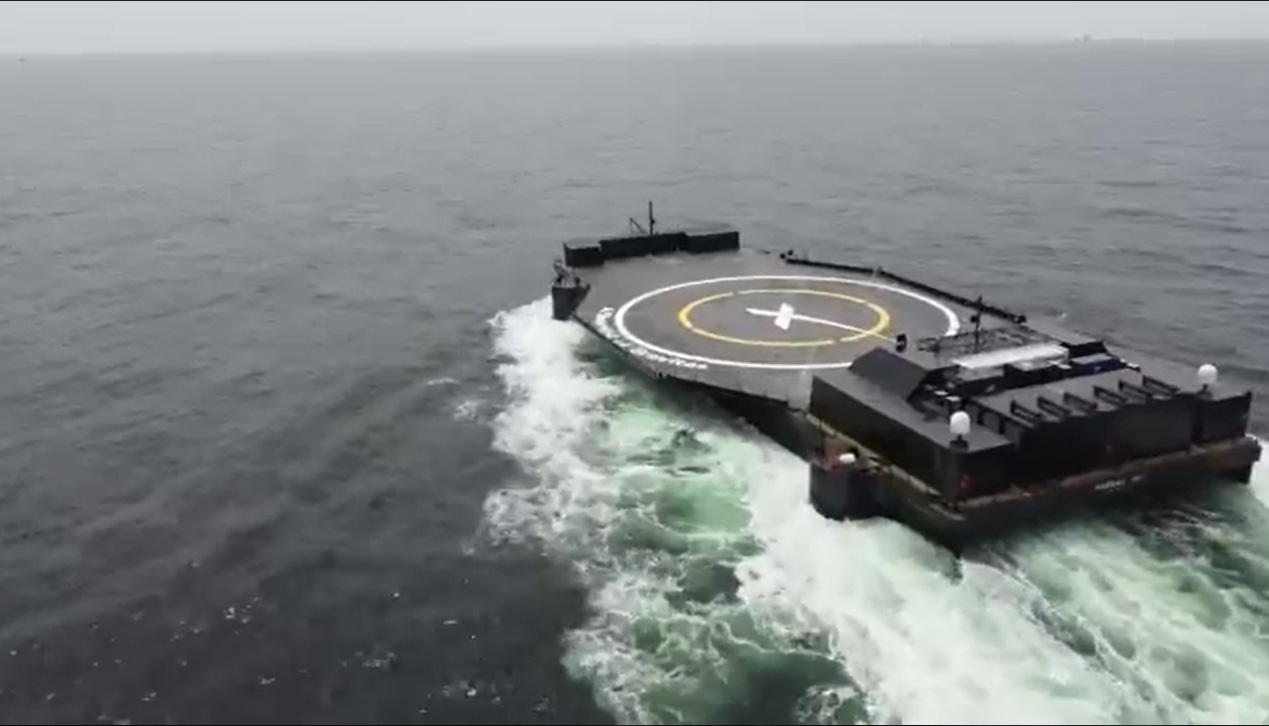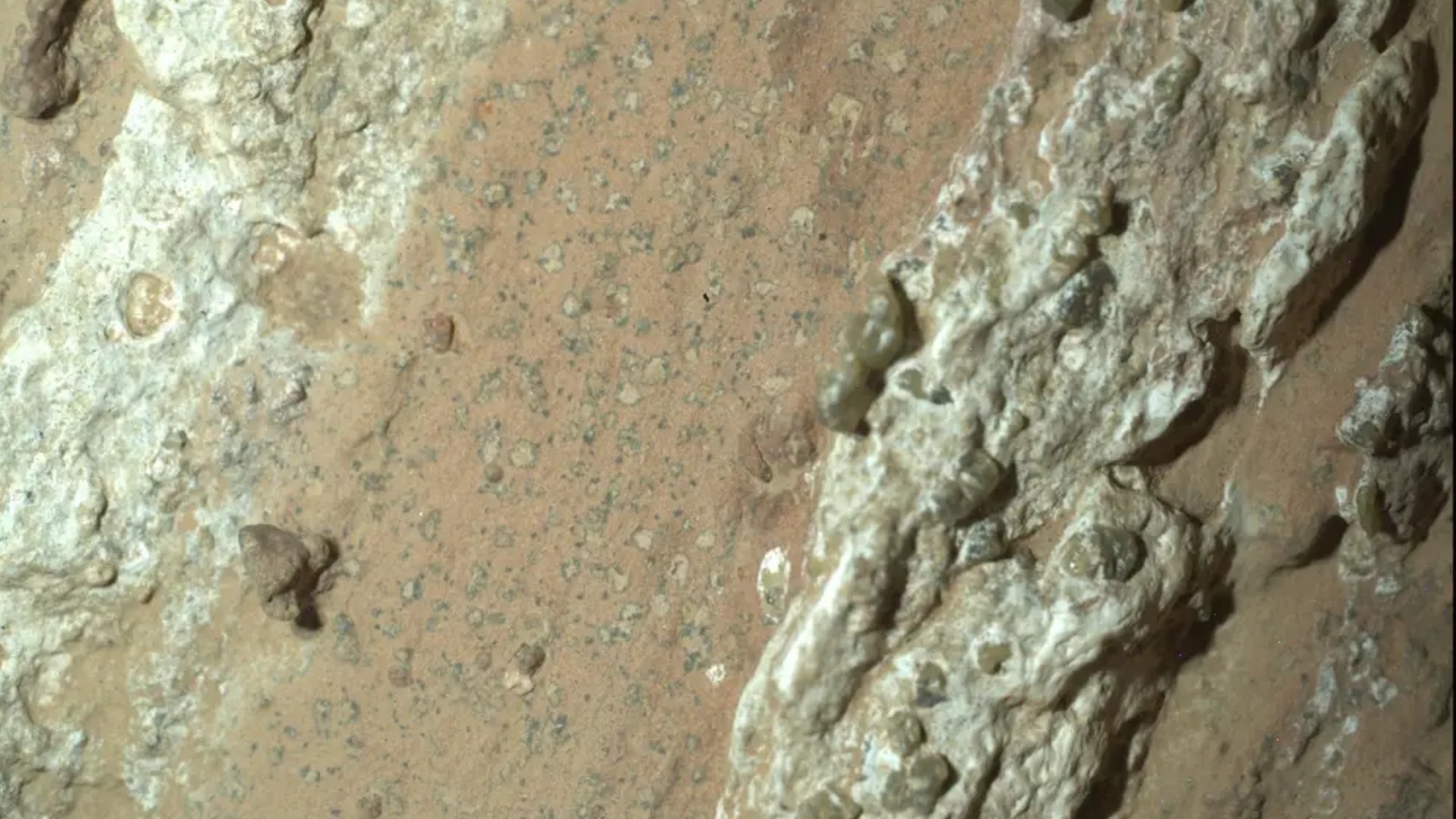Elon Musk unveils SpaceX's newest drone ship for rocket landings at sea
Meet 'A Shortfall of Gravitas.'
The drone fleet used by SpaceX to catch falling rockets now has a third autonomous ship, whimsically called "A Shortfall of Gravitas."
Founder Elon Musk unveiled the newest floating rocket landing pad on Twitter Friday (July 9) along with a dramatic video from a flying drone circling the ship.
"Autonomous SpaceX droneship, A Shortfall of Gravitas," Musk wrote succinctly in the post. The drone ship is fully automated with no tugboat required to take it out into the Atlantic Ocean nearby SpaceX's typical launch site at the Kennedy Space Center in Florida, he added in another tweet.
Related: The evolution of SpaceX rockets in pictures
The new ship will be put in place in Florida to support Atlantic launches of Falcon Heavy and the flagship rocket of SpaceX, the Falcon 9, that regularly sends Starlink broadband satellites to orbit and NASA astronauts and cargo to the International Space Station, among other customer requests.
SpaceX's next expected launches are a Starlink set sometime in July from Vandenberg Space Force Base in California, and the CRS-23 ISS cargo mission from the Kennedy Space Center in Florida on Aug. 18, according to SpaceflightNow's worldwide launch calendar.
"A Shortfall of Gravitas" (ASOG) will replace the role of the long-running "Of Course I Still Love You" drone ship, which has supported Atlantic launches since 2015. This month, it was switched to the Pacific Coast in a month-long journey beginning June 10. SpaceX is ramping up launches of its Starlink satellites in California, requiring more drone ship support to catch the reusable stages of its rockets.
Breaking space news, the latest updates on rocket launches, skywatching events and more!
Meanwhile, ASOG will work in the Atlantic alongside SpaceX's other droneship, "Just Read the Instructions" (JRTI), which moved to Port Canaveral from the Port of Los Angeles in 2019. It appears the droneships may work together to catch reusable side boosters from forthcoming launches, if a Twitter conversation in 2018 still holds water, so to speak. Back then, Musk said a third droneship was under construction.
Like the other two droneships, ASOG is named in honor of work from the late science fiction author Iain M. Banks. The newest ship's namesake is the fictional spaceship "Experiencing A Significant Gravitas Shortfall," while the other two ships are also named for vessels mentioned in Banks' "Culture" novels.
ASOG's arrival also comes as SpaceX is ramping up work on its Starship prototype series that is meant to test out a spaceship that could one day be used as the backbone of a Mars settlement scheme by the California company. SpaceX hopes to do an orbital test of Starship soon, and was targeting July, but it is waiting on certification from the Federal Aviation Administration in a process that typically takes months at the least. Starship launches from nearby the village of Boca Chica, Texas.
Follow Elizabeth Howell on Twitter @howellspace. Follow us on Twitter @Spacedotcom and on Facebook.

Elizabeth Howell (she/her), Ph.D., was a staff writer in the spaceflight channel between 2022 and 2024 specializing in Canadian space news. She was contributing writer for Space.com for 10 years from 2012 to 2024. Elizabeth's reporting includes multiple exclusives with the White House, leading world coverage about a lost-and-found space tomato on the International Space Station, witnessing five human spaceflight launches on two continents, flying parabolic, working inside a spacesuit, and participating in a simulated Mars mission. Her latest book, "Why Am I Taller?" (ECW Press, 2022) is co-written with astronaut Dave Williams.


